This post may contain affiliate links. Please read our Disclosure Policy for more information.
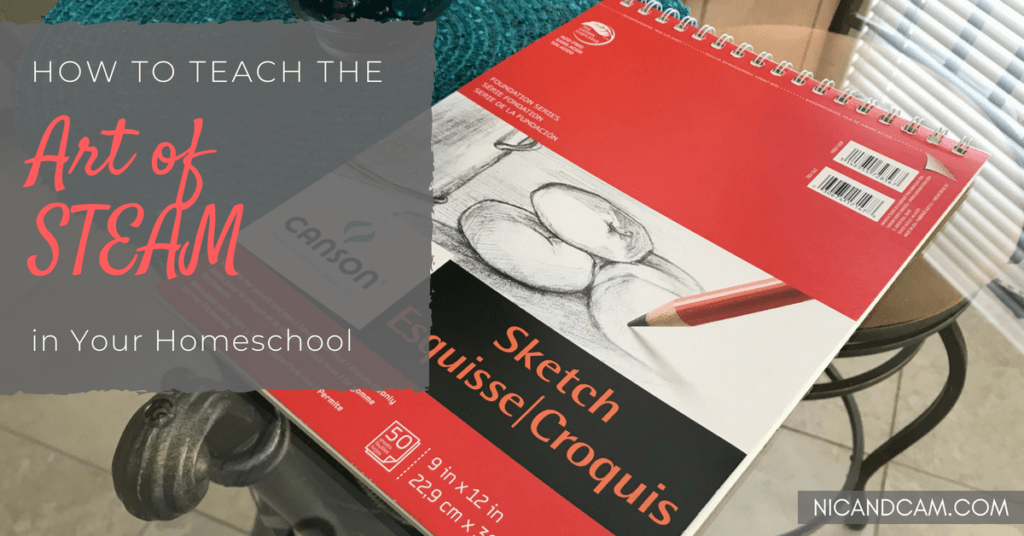
Before we talk about how to teach the art of STEAM in your homeschool, we need to backup one step, subtract the “A,” and talk about STEM for a moment. Probably all of us have heard of STEM (Science, Technology, Engineering, Math) education. STEM helps us learn by questioning, designing, building, and deducing. STEM integrates all these subjects and makes learning exciting. In fact, I’ll even take it a little further and say that STEM education promotes a lifelong love of learning.
A lifelong love of learning. That’s actually one of Sonlight’s goals…to instill a love for learning in our kids (and in us too!). In fact, Sonlight’s guarantee is called the Love to Learn, Love to Teach™ Guarantee. They’re serious about this!
I’m beyond thrilled to be partnering with Sonlight Curriculum for the 2018-2019 school year as a Sonlight Ambassador. After using Sonlight from the beginning of our children’s formal education (6 years & counting!) and loving it, Sonlight has provided me with HBL E, Science E, LA E (including optional supplements & handwriting), and an art elective, for our next school year. I look forward to sharing with you as we explore America’s history from the mid-1800s to present time. All opinions are 100% my own.
STEAM
The merits of STEM are many, but have you heard of STEAM (Science, Technology, Engineering, Arts, Math)? The “A” for Arts has now been added to the acronym. This adds a creativity component to STEM. Right now, half of us may be super excited about the inclusion of arts, and the other half are a wee bit scared (ahem…like me). Creativity comes more naturally for some of us than others.
Case in point: I grew up in a house full of creatives…well, all except me. Three out of the four of us have a variety of college degrees in the Fine Arts (music composition, conducting, music education, photography, fashion design). I’m the one who chose otherwise and went the business school route. I’m pretty good at playing Pictionary, but I won’t be opening an art gallery any time soon!
Lest we think that we need to be the next Renaissance artiste to teach the art of STEAM in our homeschool, however, here’s some encouragement. The Arts in this sense are broader than just a child’s coloring page or watercolors (or a sculpture on public display in Rome, or a painting hanging in the Louvre). They can include, but aren’t limited to, visual arts, music, and language arts (and Sonlight has you covered in all those areas).
Why STEAM?
How much fun would a video game or movie be without music or a pleasing aesthetic (meaning, the “A” in STEAM)? Answer: not much fun.
How about baking a smiley face emoji birthday cake? Here’s the STEAM breakdown:
- S (Science) = applying the right conditions for the right chemical reactions to occur
- T (Technology) = using digital scales and/or thermometers
- E (Engineering) = forming the cake into a recognizable shape
- A (Arts) = using the right colors and supplies to make the cake look like a smiley face emoji
- M (Math) = making sure all your measurements are exact
How much fun would that smiley face emoji birthday cake be if, instead, it looks like a creature from the deep? If the “A” in STEAM wasn’t as developed as the other subjects? Answer: not much fun (and call it a Pinterest fail).
Language arts are also a vital part of the “A” in STEAM. We need to learn how to write and form logical thoughts. We need to be able to communicate in the real world…more than just texts and social media snippets.
Teach the Art of STEAM
Sonlight already helps us incorporate STEAM into our homeschool. For example, take the TOPS corn and beans experiments, which are part of Sonlight Science D. Here’s the STEAM breakdown:
- S (Science) = scientific process, including forming a hypothesis, performing the experiment, and observation
- T (Technology) = plotting data points in Excel to see a more precise line graph
- E (Engineering) = building a balance for measuring mass throughout the experiment
- A (Arts) = drawing the beans and corn kernels at various stages of the experiment & writing observations in the science journal
- M (Math) = calculating the increase/decrease in mass over time
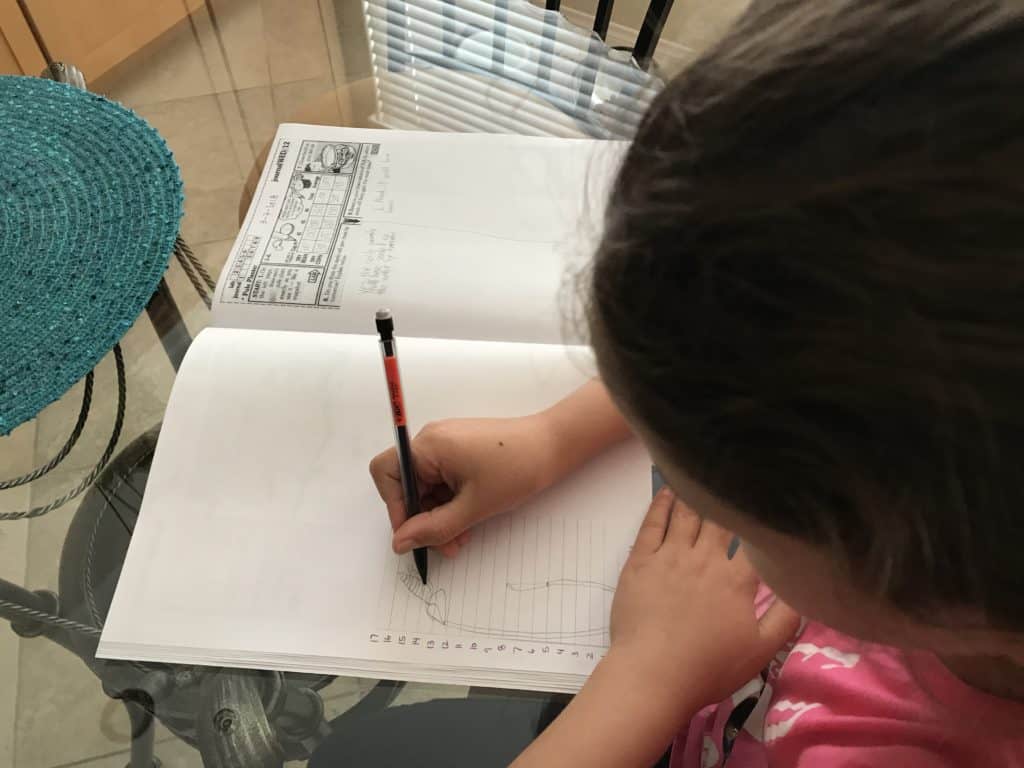
Cool STEAM project, right? Yes! We accomplished everything, including the drawing part, even though it was the trickiest task for us.
How to Improve in the Arts Department
I know when my Pictionary drawing looks good and when it doesn’t, but how to improve said drawing can be a mystery. Therefore, knowing how to help my children improve their drawings is sketchy (no pun intended) at best.
Enter Mark Kistler’s Draw Squad. When I saw that this book was part of Sonlight’s Electives E package, I was so glad, because I knew it would be perfect for us this school year.
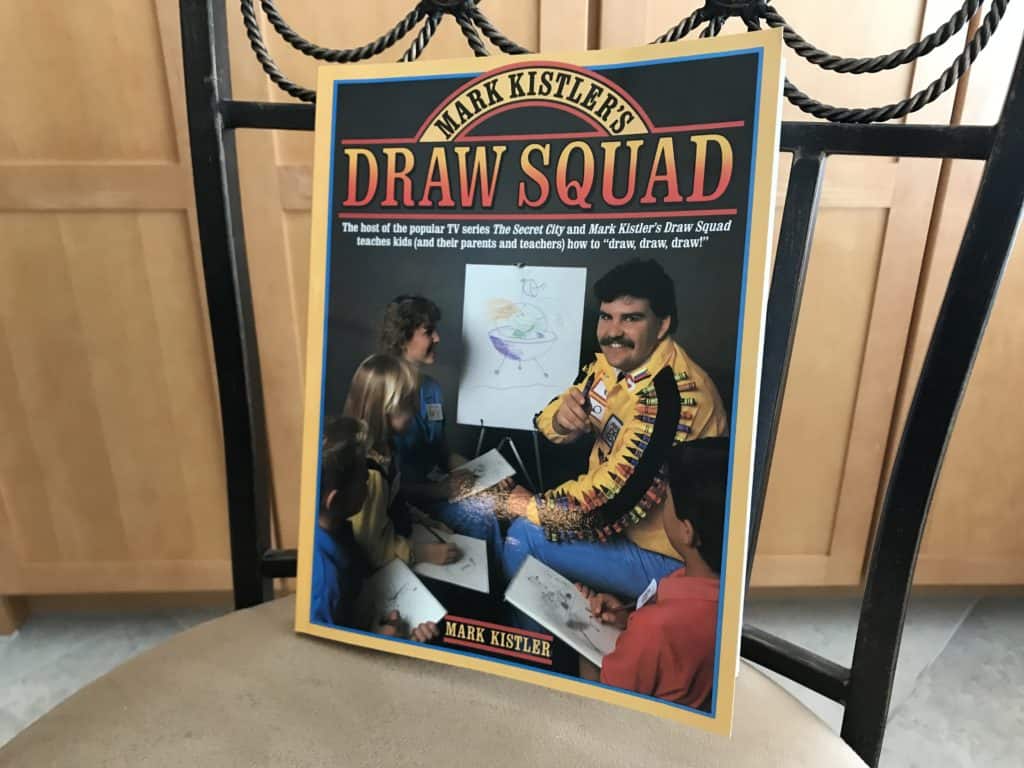
The book guides the artist-in-training through 30 lessons that build upon core skills. Before the lessons, there is a “pre-test” that consists of drawing two simple items. This is used to look back on and show how quickly one’s drawing skills can progress as the lessons are completed.
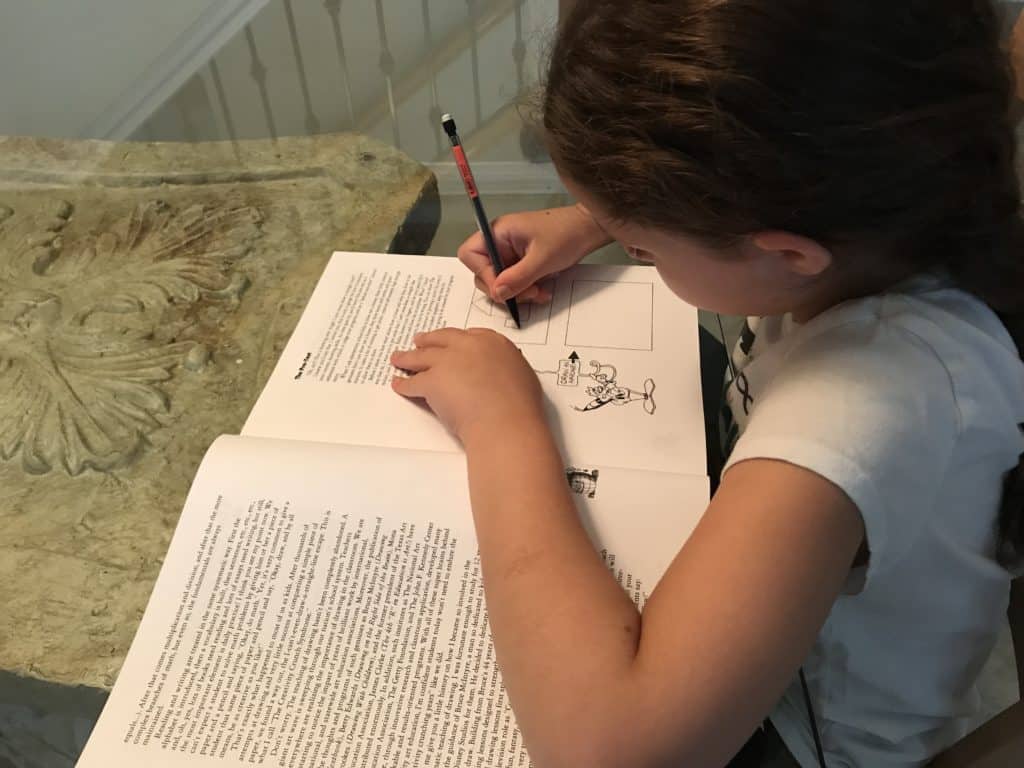
By the end of the first lesson, Older Daughter had moved from basic 2-D drawings to incorporating some perspective and depth.
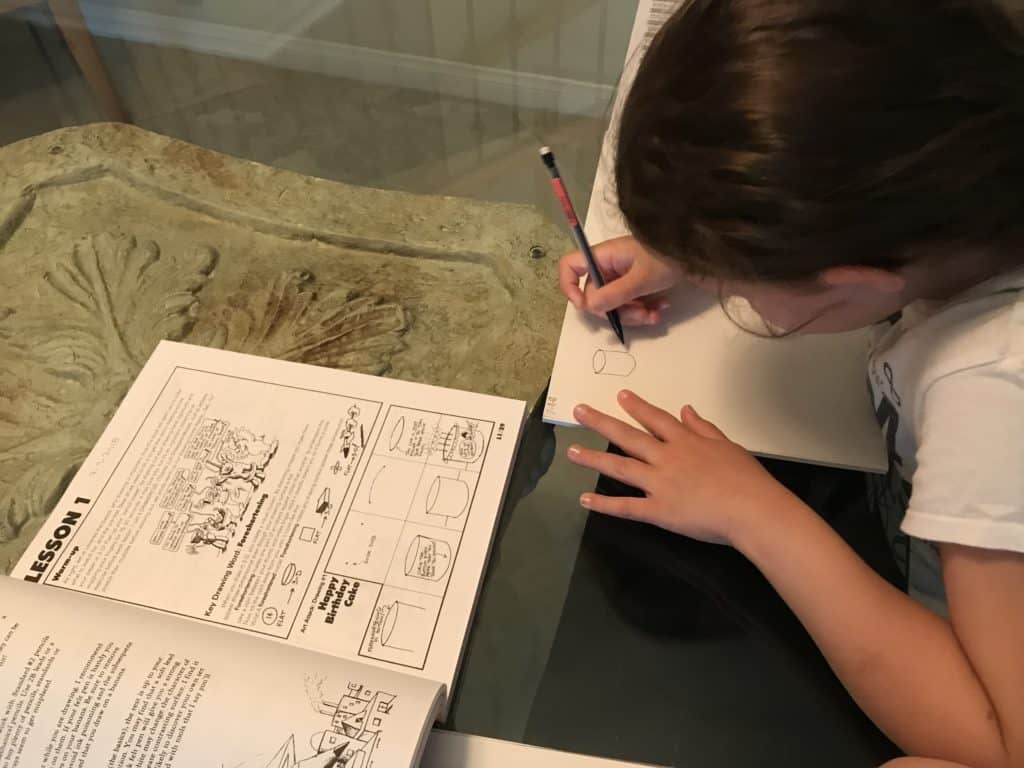
Halfway through the book, trickier drawings, such as staircases and scrolls, are being learned.
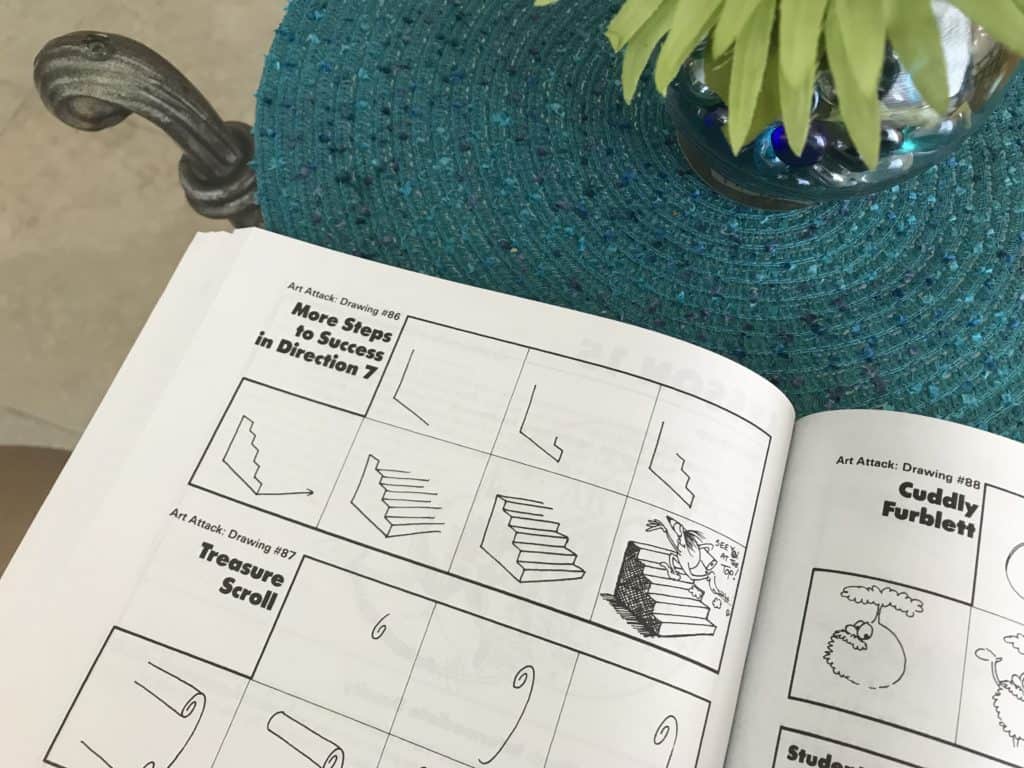
Another great thing about Mark Kistler’s Draw Squad is that the only art supplies needed are a sketch pad and pencil!
With these easy, step-by-step lessons helping teach the art of STEAM, next time we need to incorporate a drawing into our science journal or write a story with an accompanying illustration, we’ll be better prepared.
I even got sketch pads for Younger Daughter and myself, so we can all learn together!
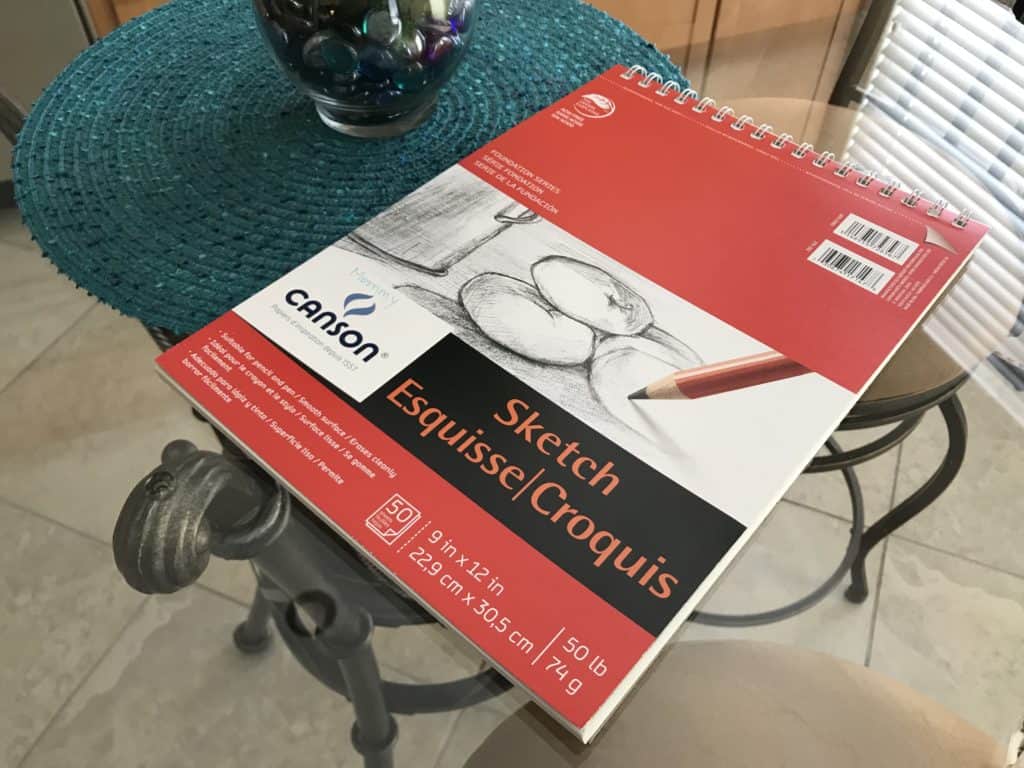
By purposing to teach the art of STEAM in your child’s education, it can add fuel to their creativity. They’ll have the potential of becoming a creative communicator who is also capable of innovation within the more technical STEM subjects. Learning this way at a young age can be fun and engaging, and in turn, that can lead to the lifelong love of learning!
Hey, with Sonlight’s great books, maybe the acronym could even be extended one more time to STREAM (Science, Technology, Reading, Engineering, Arts, Math)!
Time to find my creative side!
Click HERE to receive $5 off your Sonlight purchase of $50+.
Read more about why we chose Sonlight, how Sonlight helps us have the freedom to travel, and how I organize our homeschool.
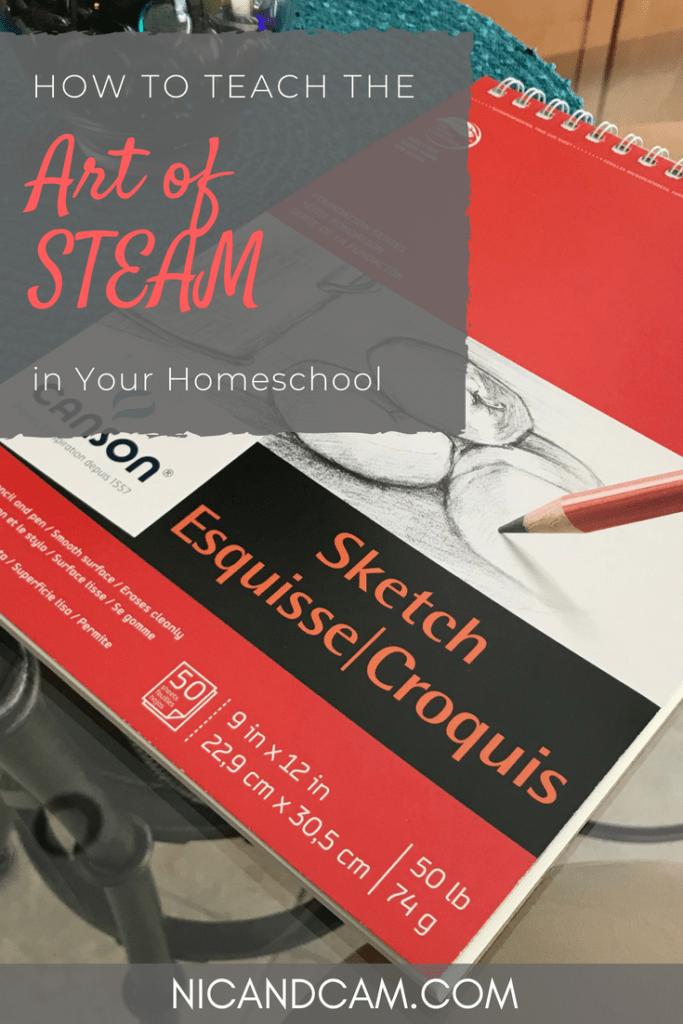
How do you teach the art of STEAM in your homeschool? Please share in the comments below!
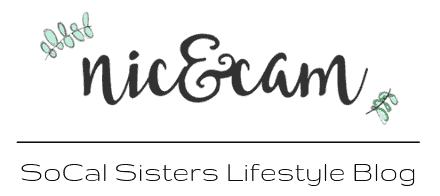
Yea for the arts! Involvement in the arts can boost other areas of learning as well, since it exercise parts of the brain that are not a part of other learning experiences!
Thanks…